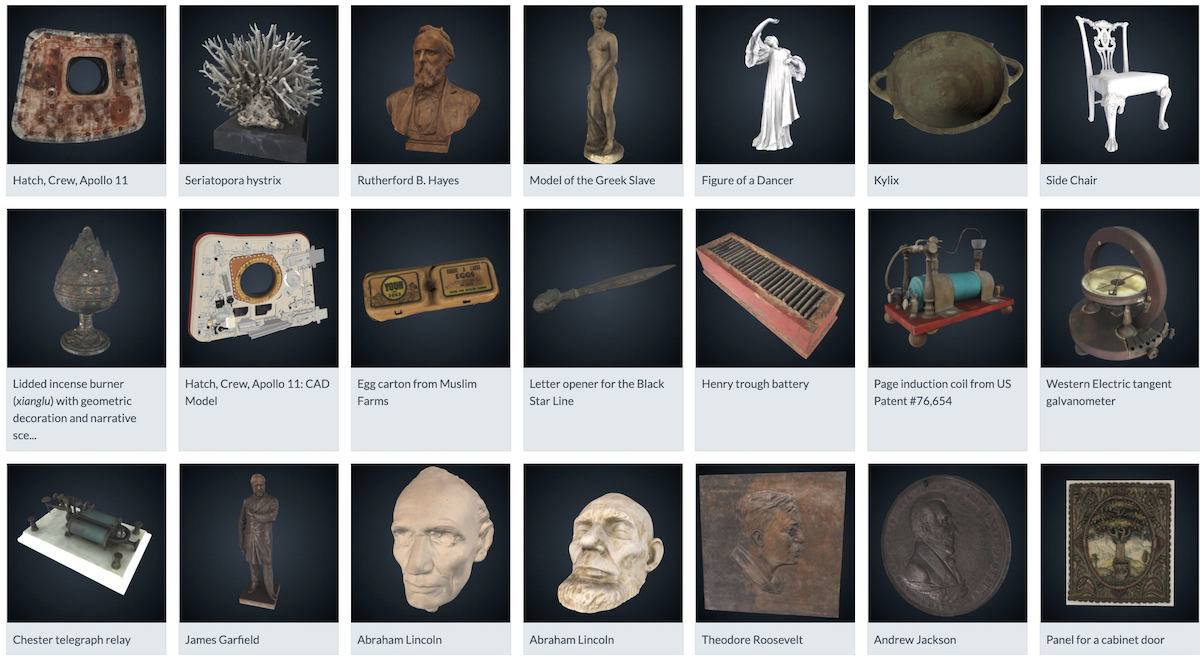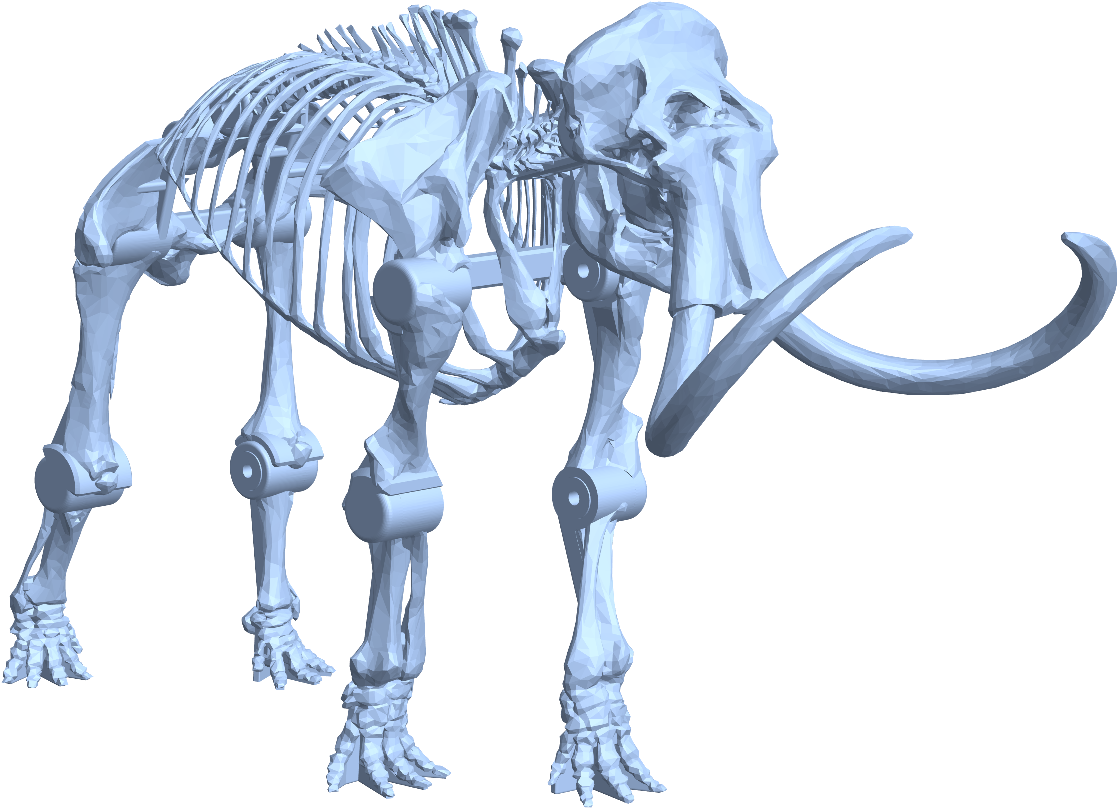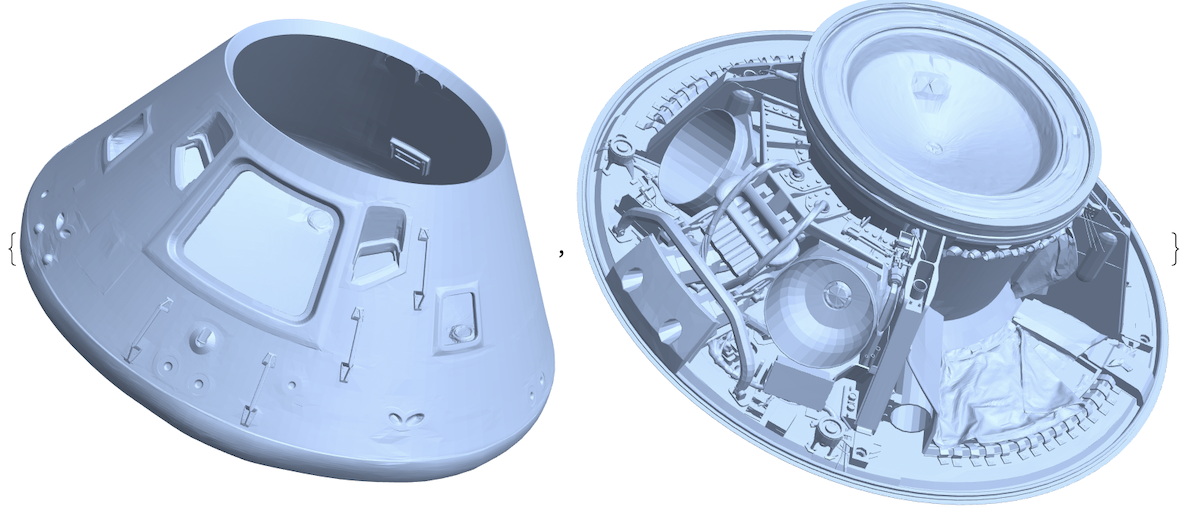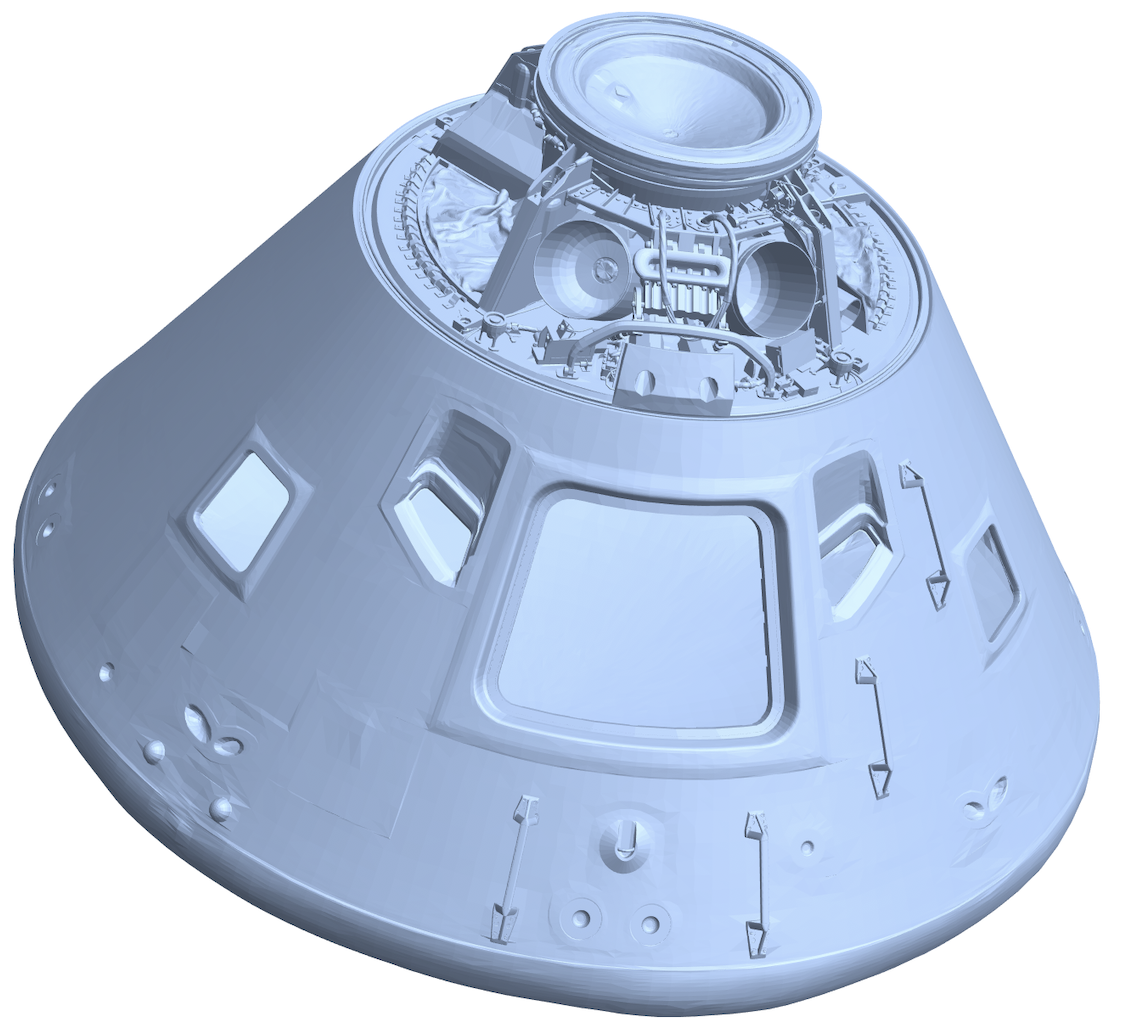According to the official announcement:
For the first time in its 174-year history, the Smithsonian has released 2.8 million high-resolution two- and three-dimensional images from across its collections onto an open access online platform for patrons to peruse and download free of charge. Featuring data and material from all 19 Smithsonian museums, nine research centers, libraries, archives and the National Zoo, the new digital depot encourages the public to not just view its contents, but use, reuse and transform them into just about anything they choose—be it a postcard, a beer koozie or a pair of bootie shorts.
COLLECTION is HERE: https://www.si.edu/openaccess
There are a lot of interesting and images and 3D models from very diverse corners of life, - here are a few samples:

One of coolest thing is that some of 3D models are given in parts that can be 3D printed separately and then assembled together, thus making cool DIY project. Here is an example you can try with a 3D model of Mammuthus primigenius / Blumbach. Below the model find and copy the download link:

Import data from the collection (I shortened the URL with URLShorten):
data = Import["https://wolfr.am/KQ6NWYff", "*"]

You can see these are the pieces that should make up a whole object:
Show[data]

It is easy to make 3D printouts with the Wolfram Language -- the parts
Printout3D /@ data
or whole thing:
Printout3D[RegionUnion @@ data]

It is a really neat toy and reminds me of 3D puzzles: you get the parts and have to figure out what the whole is by building it. Could be a fun time with kids :-) If you can get your hands on 3D printer it might be better than a toy store. There are very different types too. Here is, for instance for space-dreamers, the Apollo 11 Command Module -- apart and together.
apollo = Import["https://wolfr.am/KQLE0LOx", "*.obj"]

Show[apollo]
